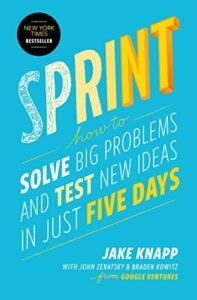|

|
Sprint:
To prototype your solution, you’ll need a temporary change of philosophy: from perfect to just enough, from long-term quality to temporary simulation.
|
168 |
|

|
Sprint:
Don’t prototype anything you aren’t willing to throw away. Remember: This solution might not work.
|
169 |
|

|
Sprint:
The distinction between feedback and reaction is crucial. You want to create a prototype that evokes honest reactions from your customers.
|
170 |
|

|
Sprint:
One-on-one interviews are a remarkable shortcut. They allow you to test a façade of your product… But they also offer an important insight that’s nearly impossible to get with large-scale quantitative data: why things work or don’t work.
|
199 |
|

|
Sprint:
When all you have is statistics, you have to guess what your customers are thinking. When you’re doing an interview, you can just…ask.
|
200 |
|

|
Sprint:
Seeing where customers struggle and where they succeed with your prototype is useful – but hearing their thoughts as they go is invaluable.
|
208 |
|

|
Sprint:
Asking target customers to do realistic tasks during an interview is the best way to simulate that real-world experience.
|
208 |
|

|
Sprint:
Open-ended tasks lead to interesting interviews. Overly specific tasks are boring for both the customer and the sprint team.
|
208 |
|

|
Sprint:
To understand what the customer thinks, you have to be careful not to ask leading questions.
|
212 |
|

|
Sprint:
When you ask an open-ended question, you’re more likely to get an honest reaction and an explanation of why.
|
213 |











